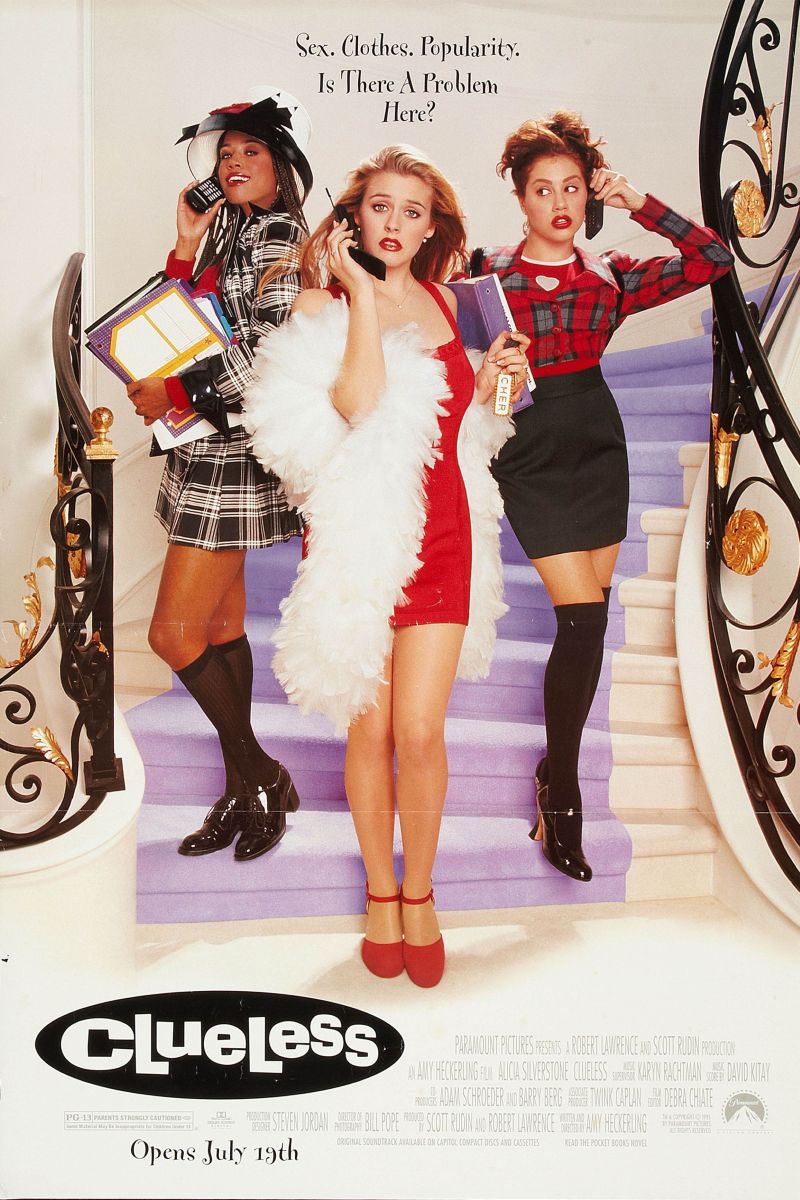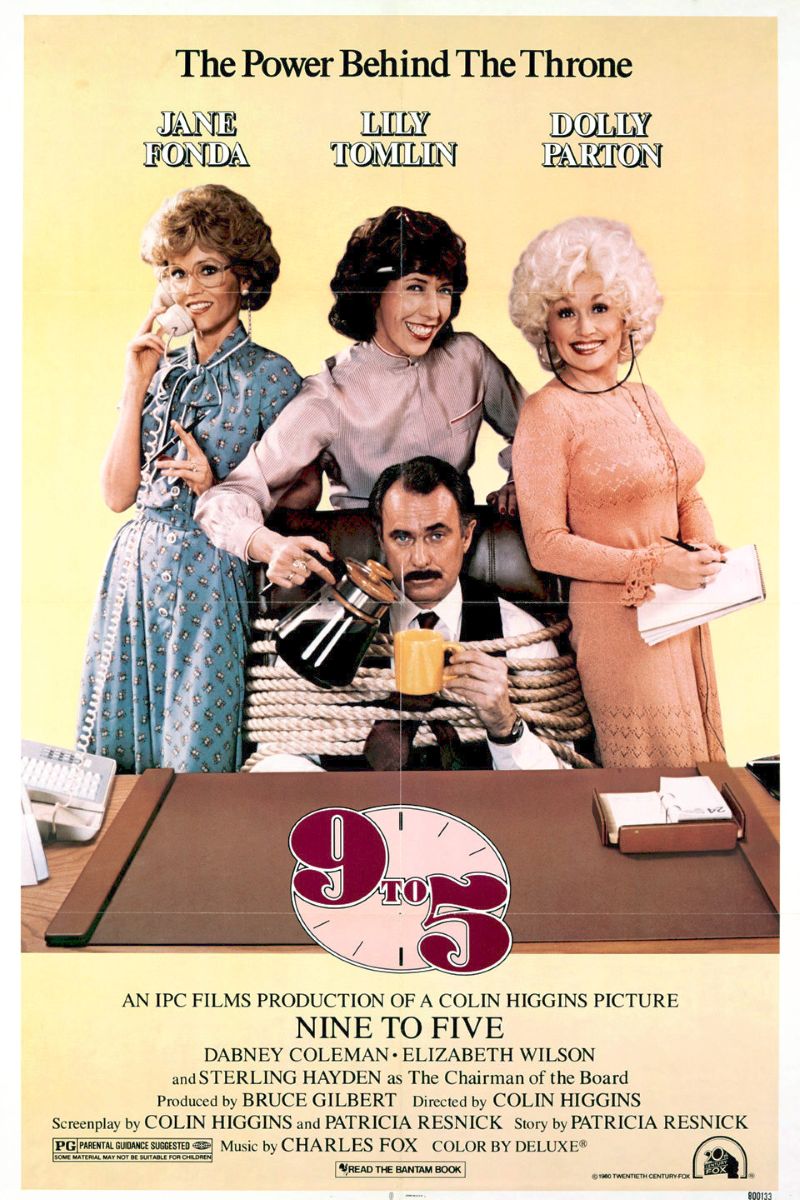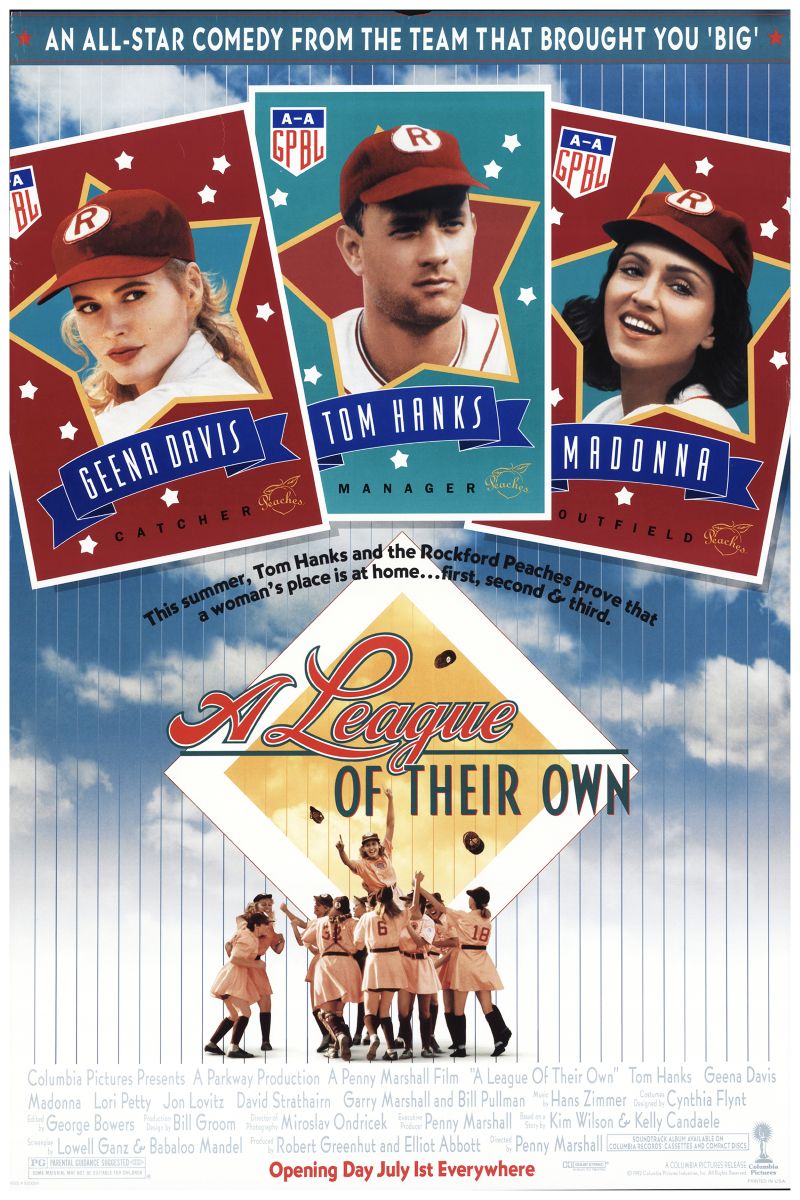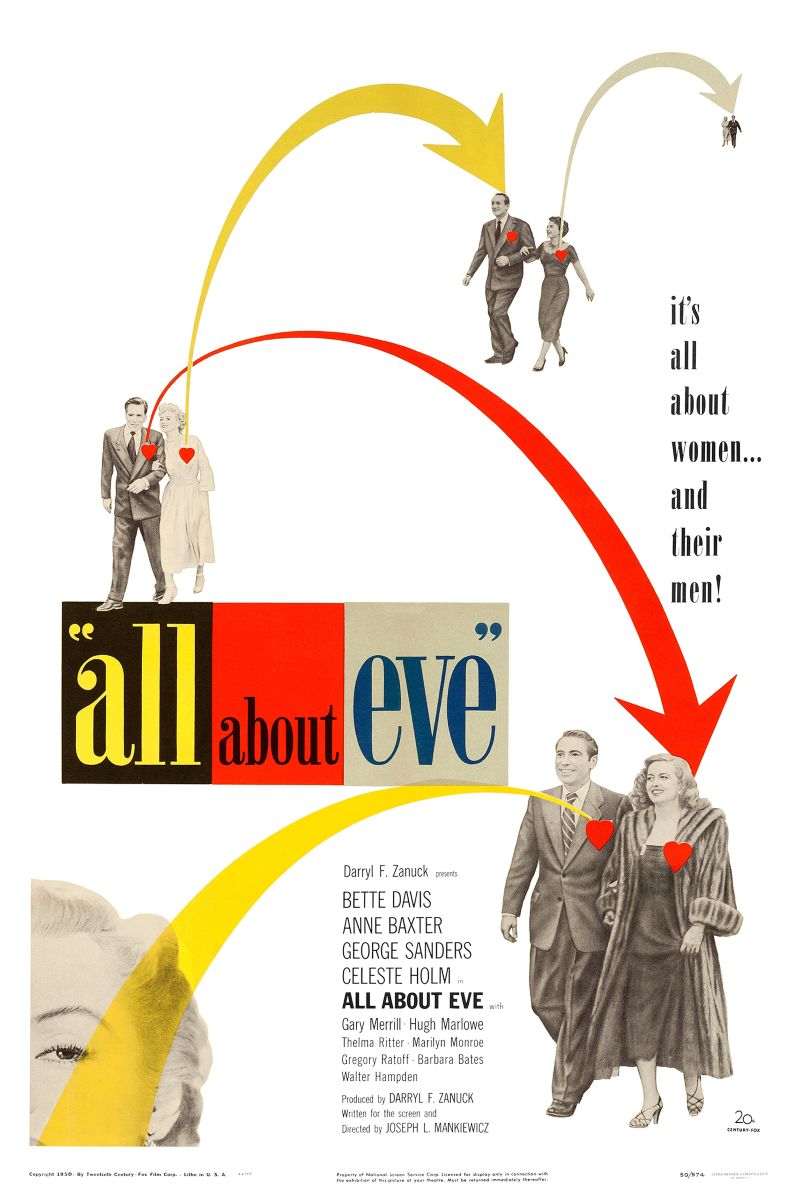
Clueless
Clueless
A "way existential" 1990s time capsule of fashion, pop culture, and Valley girl verbiage, Amy Heckerling's rom-com riff on Jane Austen's Emma celebrates female friendship and sexuality, and it puts a woman's self-fulfillment above finding a man. Even if "fulfillment" technically includes finding a man.
Cast
Related Topics
🎥 Film Analysis & Review
Amy Heckerling’s “Clueless” stands as a landmark achievement in feminist cinema, brilliantly disguising sharp social commentary within the glossy veneer of a Beverly Hills teen comedy. This 1995 adaptation of Jane Austen’s “Emma” transcends its apparent superficiality to become a sophisticated exploration of third-wave feminism, class privilege, and female agency in consumer capitalist society. Through its iconic protagonist Cher Horowitz, the film challenges traditional notions of feminine intelligence while celebrating the power of female friendship and self-determination in ways that continue to resonate nearly three decades later.
Third-Wave Feminist Iconography
“Clueless” arrived at a crucial moment in feminist discourse, emerging during the transition from second to third-wave feminism when young women were reclaiming traditionally feminine markers like fashion, beauty, and sexuality as sources of empowerment rather than oppression. Cher Horowitz embodies this paradigm shift as a character who refuses to separate intelligence from femininity, competence from appearance, or power from pink.
The film’s revolutionary approach lies in its rejection of the false binary that positions “serious” feminism against feminine expression. Cher’s computer-assisted wardrobe selection system, far from representing mindless consumerism, demonstrates technological literacy and organizational efficiency. Her attention to fashion functions as a form of cultural fluency and social communication, skills that the film validates as legitimate forms of intelligence rather than dismissing as vanity.
Heckerling’s script consistently challenges audience assumptions about intelligence and worth. When Cher mispronounces “Haitians” as “Hate-ians” during her debate about refugee policy, the film invites initial laughter at her apparent ignorance while simultaneously revealing her genuine compassion for human suffering. This complexity captures the third-wave feminist recognition that women can be simultaneously privileged and marginalized, intelligent and uninformed, empowered and constrained.
Female Friendship as Revolutionary Force
The film’s treatment of female relationships offers a radical alternative to conventional Hollywood portrayals of women as competitors for male attention. Cher’s friendship with Dionne operates on principles of mutual support, shared interests, and genuine affection that never deteriorate into jealousy or betrayal despite their similar social positions and romantic entanglements.
Their partnership extends beyond emotional support to practical collaboration in navigating social hierarchies and educational challenges. When they jointly undertake Tai’s transformation, they demonstrate female mentorship and collective action rather than individual competition. Their failure to maintain control over Tai’s social ascension becomes a lesson in respecting others’ autonomy rather than treating people as projects.
The film’s exploration of female friendship across class lines through Cher’s relationship with Tai reveals both the possibilities and limitations of female solidarity. While Cher’s initial approach to Tai reflects condescending assumptions about class and cultural capital, their evolving relationship demonstrates how genuine friendship can transcend social barriers when based on mutual respect rather than charitable impulses.
Deconstructing the Male Gaze Through Fashion
“Clueless” performs a sophisticated deconstruction of traditional gender dynamics through its treatment of fashion and appearance. Rather than presenting Cher’s style consciousness as performance for male approval, the film establishes fashion as a form of self-expression, creativity, and social communication that operates primarily within female networks.
The film’s famous outfit selection sequences transform getting dressed from passive beautification into active decision-making that considers weather, social context, and personal expression. Cher’s computerized closet system represents technological engagement and systematic thinking, challenging stereotypes about feminine frivolity while celebrating the intellectual complexity involved in successful social navigation.
Most significantly, the film reveals how fashion consciousness can function as a form of power and agency rather than subjugation. Cher’s ability to read and manipulate social situations through sartorial choices demonstrates competence in cultural literacy that the film validates as legitimate skill rather than superficial vanity.
Class Privilege and Social Consciousness
The film’s treatment of wealth and privilege operates on multiple levels, simultaneously satirizing elite excess while acknowledging the real advantages that class position provides. Cher’s Beverly Hills lifestyle enables her educational opportunities, social confidence, and philanthropic activities, but the film also reveals how privilege can create insularity and limited perspective.
Heckerling’s script exposes the contradictions inherent in liberal class consciousness through Cher’s simultaneous engagement with social issues and disconnection from their lived realities. Her concern for refugees demonstrates genuine empathy, but her solutions reflect the limitations of charitable thinking rather than structural analysis. This complexity allows the film to critique privilege without dismissing the genuine good intentions of those who benefit from it.
The character of Travis serves as a crucial counterpoint to Beverly Hills superficiality, representing authentic values and environmental consciousness that exist outside elite consumer culture. His relationship with Tai suggests possibilities for cross-class connection based on shared values rather than social positioning, though the film avoids romanticizing economic difference or suggesting that love transcends material conditions.
Consumer Culture and Authentic Identity
“Clueless” navigates the complex relationship between consumer culture and personal identity with remarkable sophistication, neither celebrating nor entirely condemning the role of material goods in self-expression and social belonging. Cher’s shopping expertise and brand consciousness function as forms of cultural literacy that enable social navigation and creative expression within capitalist frameworks.
The film suggests that authentic identity can coexist with consumer participation when consumption serves self-determined goals rather than external validation. Cher’s fashion choices reflect personal preferences and creative vision rather than desperate attempts to conform or attract attention, demonstrating how consumer goods can function as tools for self-expression rather than identity substitutes.
Through the character of Amber, the film explores the difference between consumptive self-expression and competitive status display. While Cher uses fashion as creative medium and social communication, Amber’s appearance consciousness serves primarily to establish superiority over others, revealing how the same activities can serve different psychological and social functions.
Educational Reform and Female Intellectual Authority
The film’s treatment of education reveals multiple critiques of traditional academic structures while celebrating alternative forms of intelligence and learning. Cher’s successful manipulation of her teachers to improve their moods and effectiveness demonstrates practical psychology and leadership skills that formal curricula fail to recognize or develop.
Her debate performances showcase rhetorical ability and persuasive communication that challenge assumptions about Valley girl speech patterns and intellectual capacity. The film reveals how linguistic prejudice can obscure genuine analytical thinking, suggesting that educational institutions often mistake surface markers for substantive ability.
The transformation of Mr. Hall and Ms. Geist from ineffective educators into engaged teachers through Cher’s romantic manipulation demonstrates female agency in institutional change. Rather than passively accepting poor instruction, Cher actively intervenes to improve educational quality for herself and her classmates, exercising leadership that formal structures don’t acknowledge.
Sexuality and Romantic Agency
“Clueless” presents a remarkably progressive approach to female sexuality that emphasizes choice, agency, and self-determination rather than external validation or romantic fulfillment. Cher’s decision to remain a virgin reflects personal values and autonomous choice rather than moral obligation or lack of opportunity, challenging both purity culture and sexual pressure.
The film’s treatment of Cher’s romantic development with Josh subverts traditional romance narratives by prioritizing intellectual compatibility and mutual respect over passion or conquest. Their relationship develops through genuine friendship and intellectual engagement rather than sexual attraction or romantic pursuit, suggesting models for romantic partnership based on equality rather than complementarity.
Through Tai’s relationships with Travis and Elton, the film explores how class, authenticity, and social positioning affect romantic possibilities. Tai’s attraction to the unavailable Elton represents internalized social hierarchies, while her connection with Travis suggests possibilities for relationships based on shared values rather than social advancement.
Media Literacy and Cultural Critique
The film demonstrates sophisticated understanding of media representation and cultural construction while operating within mainstream Hollywood frameworks. Heckerling’s script consistently reveals awareness of its own artificiality through Cher’s media-savvy observations and pop culture references that acknowledge the constructed nature of teen movie conventions.
Cher’s ability to navigate multiple media forms—from television news to fashion magazines to computer technology—demonstrates the media literacy skills necessary for contemporary social participation. Her critical engagement with information sources and ability to synthesize knowledge from various media forms reflects intellectual capabilities that traditional educational assessment often overlooks.
The film’s self-reflexive moments, particularly Cher’s awareness of romantic comedy conventions and social performance expectations, create space for audience critical engagement with the very narratives the film employs. This meta-textual awareness allows “Clueless” to simultaneously participate in and critique teen movie traditions.
Legacy and Contemporary Relevance
“Clueless” established crucial precedents for representing female intelligence, friendship, and agency in mainstream cinema while maintaining commercial appeal and entertainment value. Its influence extends far beyond teen comedy into broader discussions of feminism, class, consumer culture, and authentic identity in postmodern society.
The film’s approach to third-wave feminism anticipated many contemporary discussions about choice feminism, privilege, and the relationship between individual empowerment and structural change. Its celebration of traditionally feminine interests while maintaining intellectual seriousness provided models for later films seeking to represent complex female characters without sacrificing relatability.
Contemporary feminist discourse continues to grapple with questions that “Clueless” raised about the relationship between consumption and empowerment, privilege and social responsibility, individual choice and collective action. The film’s nuanced approach to these issues remains relevant as new generations navigate similar tensions between personal fulfillment and social consciousness.
Performance and Cultural Impact
Alicia Silverstone’s performance as Cher created an iconic character who transcended the film’s initial reception to become a cultural touchstone for 1990s femininity and youth culture. Her ability to convey intelligence through apparent superficiality, strength through vulnerability, and authenticity through performance demonstrated the acting skills necessary to navigate the character’s complex contradictions.
The film’s impact on fashion, language, and youth culture extended its feminist messages into everyday life through cultural adoption of Cher’s style choices, speech patterns, and social attitudes. This cultural penetration allowed the film’s progressive ideas about female agency and friendship to influence broader social conversations about gender, class, and identity.
The enduring popularity of “Clueless” across multiple generations suggests that its themes remain relevant as young women continue to navigate questions of identity, friendship, romance, and social responsibility in consumer capitalist contexts.
Conclusion: Complexity Within Simplicity
“Clueless” achieves its lasting impact through its sophisticated understanding that apparent simplicity can contain genuine complexity, that traditionally feminine interests can coexist with intellectual seriousness, and that commercial entertainment can advance progressive political ideas without sacrificing accessibility or enjoyment.
Amy Heckerling’s direction and script demonstrate that feminist cinema doesn’t require rejection of pleasure, beauty, or traditional feminine markers to advance women’s interests and challenge patriarchal assumptions. By celebrating female friendship, intellectual capability, and autonomous choice within familiar generic frameworks, “Clueless” proved that mainstream Hollywood could accommodate sophisticated feminist themes without alienating broad audiences.
The film’s enduring relevance stems from its recognition that contemporary feminism must address the realities of consumer culture, class privilege, and media saturation rather than retreating into ideological purity or nostalgic simplicity. Cher’s journey from well-meaning ignorance to informed engagement provides a model for personal growth that acknowledges complexity, embraces contradiction, and maintains optimism about possibilities for positive change through individual agency and collective female solidarity.
Through its perfect balance of entertainment and enlightenment, “Clueless” remains a masterclass in how popular culture can advance feminist consciousness while maintaining the joy, humor, and complexity that make art genuinely transformative rather than merely instructional.
🏆 Awards & Recognition
- • National Society of Film Critics Best Screenplay
- • MTV Movie Award Best Female Performance (Alicia Silverstone)
- • MTV Movie Award Most Desirable Female (Alicia Silverstone)
- • National Board of Review Breakthrough Performance (Alicia Silverstone)
- • American Comedy Awards Funniest Actress (Alicia Silverstone)
⭐ Ratings & Links
Related Recommendations
Comments & Discussion
Discuss this video with other viewers
Join the Discussion
Discuss this video with other viewers
Loading comments...



